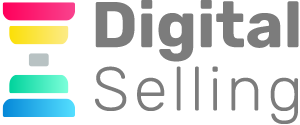I have a challenge for you. How many of the following questions can you say “yes” to?
- Do you know which communication channel has the best conversion rate?
- What Marketing actions have the most impact on revenue?
- Also consider the opposite, which is just as or more important: in which stocks and channels are you losing money?
Are your salespeople thinking “how does my solution help this prospect?” instead of “how can I sell my product faster”?
Do you know how much time your sellers spend negotiating a sale? Or rather, how much does your company lose in figuring out whether a certain lead is even worth the time of your sales specialists? Do you know the minimum value a deal must reach to be sustainable?
Do you have a specialized sales team with a clear division between who prospects and who closes deals?
There are dozens more questions I could ask you, but I’ll end with this one: do you know at which stage of the sales funnel you are losing opportunities?
If you said yes to all or most, congratulations! Your company has already established a sales process capable of generating predictable revenue and is on track to grow year after year.
For the rest, the questions I asked go to the heart of the issues that impact the predictability of sales volume.
Not knowing when the next leads, let alone the next sales, are going to drop is a harrowing feeling for any CEO or sales leader. It cannot hire new employees, has no margin for error in Marketing, or does not even do Marketing, among other problems that inhibit growth.
But despite having the best intentions, many CEOs make fundamental mistakes that keep them from achieving steady, predictable sales volume.
Many believe that more sellers = more sales. The reality is that salespeople don’t increase sales opportunities, they just dispatch. Another common mistake is to think that all sellers must prospect. The authors of the book Previsible Revenue, who were also responsible for transforming Salesforce’s sales, argue that Sales specialists must be specialized.
Even if the sales team is reduced to two specialists, Development Representative (SDR) making Salesoutbound and inbound, generating sales opportunities and qualifying leads; and an Account Executive (AE, closer) builds relationships with prospects and closing sales. As a good closer is experienced and, consequently, well paid, you won’t want to have him making cold calls, cold emails, and chasing unqualified contacts. He wants you to deal only with proven opportunities.
This is how you begin to outline the sales funnel, a fundamental step to achieving predictable revenue.
A company with a Sales Developer and an Account Executive already has the middle and bottom of the sales funnel covered. All that remains is to add Marketing at the top of the funnel, and thus increase the number of contacts that the SDR qualifies for and passes on to the closer for negotiation and sales.
To complete the funnel, and accompany the customer throughout their purchase journey, we have Customer Success. Unfortunately, this role does not exist in most companies, but the truth is that it has immense potential to expand its sales volume. It is through current customers that the so-called referrals, or referrals, both SDR and AE want to obtain. SDRs seek them out because they result in a higher qualification percentage, and Account Executives love them because they have a higher conversion rate and shorter sales cycle.
Do you want the key to creating a sales machine capable of consistently generating contacts, leads, prospects, and sales? Follow the right KPIs. I’m not talking about the vanity metrics that make us feel good, like the number of visits or email opening rate, but those that measure the pulse of your sales process:
- The conversion rate of visits-to-lead
- The rate of lead-to-MQL (Marketing Qualified Lead) conversion
- The percentage of leads accepted by sales (SAL)
- The percentage of Marketing leads that sales work
- on The MQL-to-opportunity conversion rate
- Opportunity-to-customer
- The duration of the sales cycle
- Average cost per sale
- Average sales value
With this data, you can identify the phase(s) of the sales funnel in which hand-off (passage) has problems, allowing you to make a diagnosis and act accordingly. incisive way.
Generate lots of leads but don’t have a fit for your business? Marketing is attracting the wrong people. Do you miss many sales opportunities? Sellers are taking the wrong approach, and so on.
Interestingly, the customer-centric approach is critical to predictable revenue. Gone are the days when salespeople’s priority was to “impose” their solution. The priority is to be an active agent in your client’s success, proposing the best solution to their problem. When salespeople make the connection between their solution and customer needs, sales naturally follow.
With these metrics, you also get to know the Sales Velocity, which is nothing less than a forecast of the revenue you can expect in a given period. Here’s the formula:

Sales Velocity equals the number of opportunities multiplied by the average value negotiated and the percentage of sales closed, divided by the average duration of the sales cycle.
This equation introduces again a concept that I only mentioned at the beginning: the time it takes to close a deal. Companies working to achieve predictable revenue – and predictable growth, year after year – recognize that they don’t have time (or money) to waste.
Achieving revenue predictability is about leaving nothing to chance. Everything in the sales process is systematized, the professionals are specialized and performance metrics are created to evaluate the crucial points. Even so, amid all this sales machine, it is important to recognize the humanity of customers and work with a focus on their needs.

 Português
Português Português
Português
